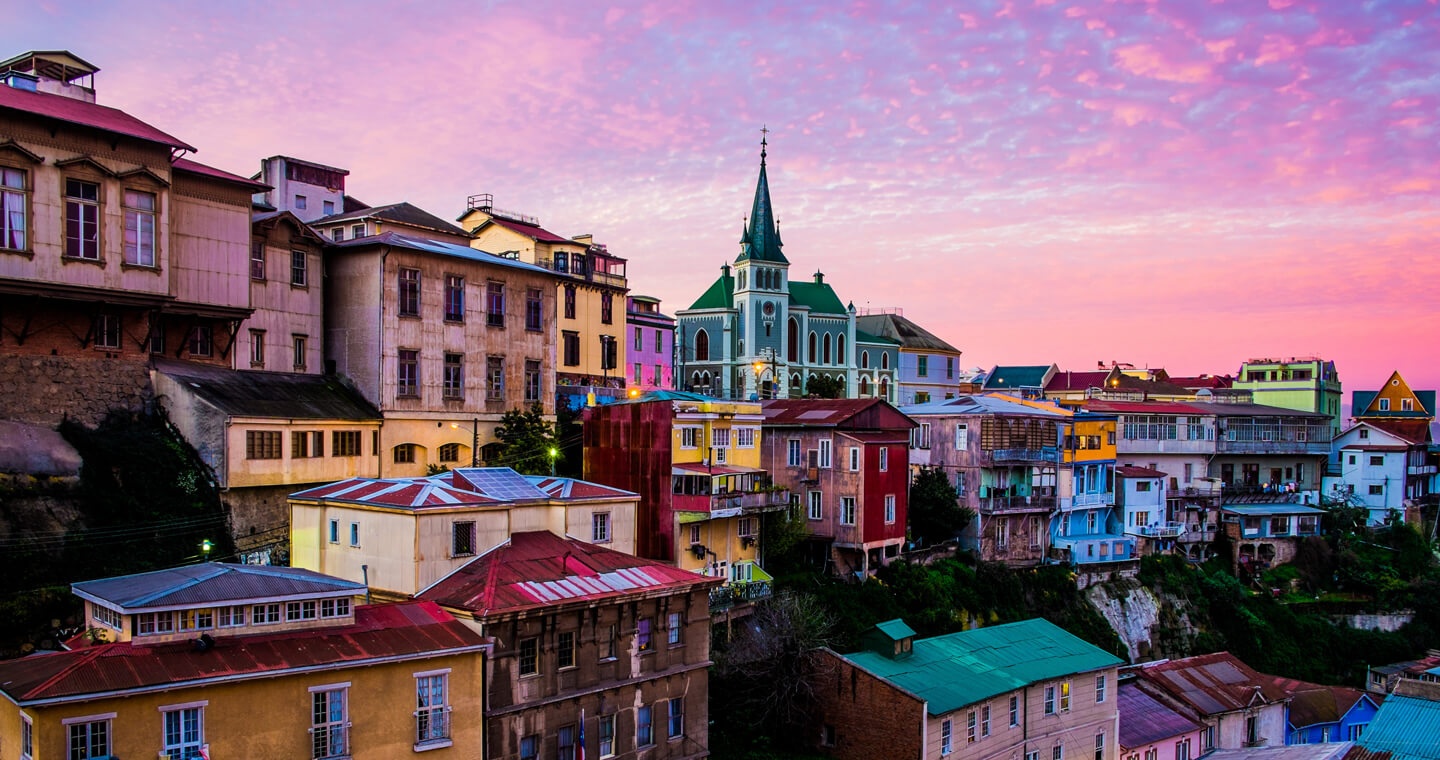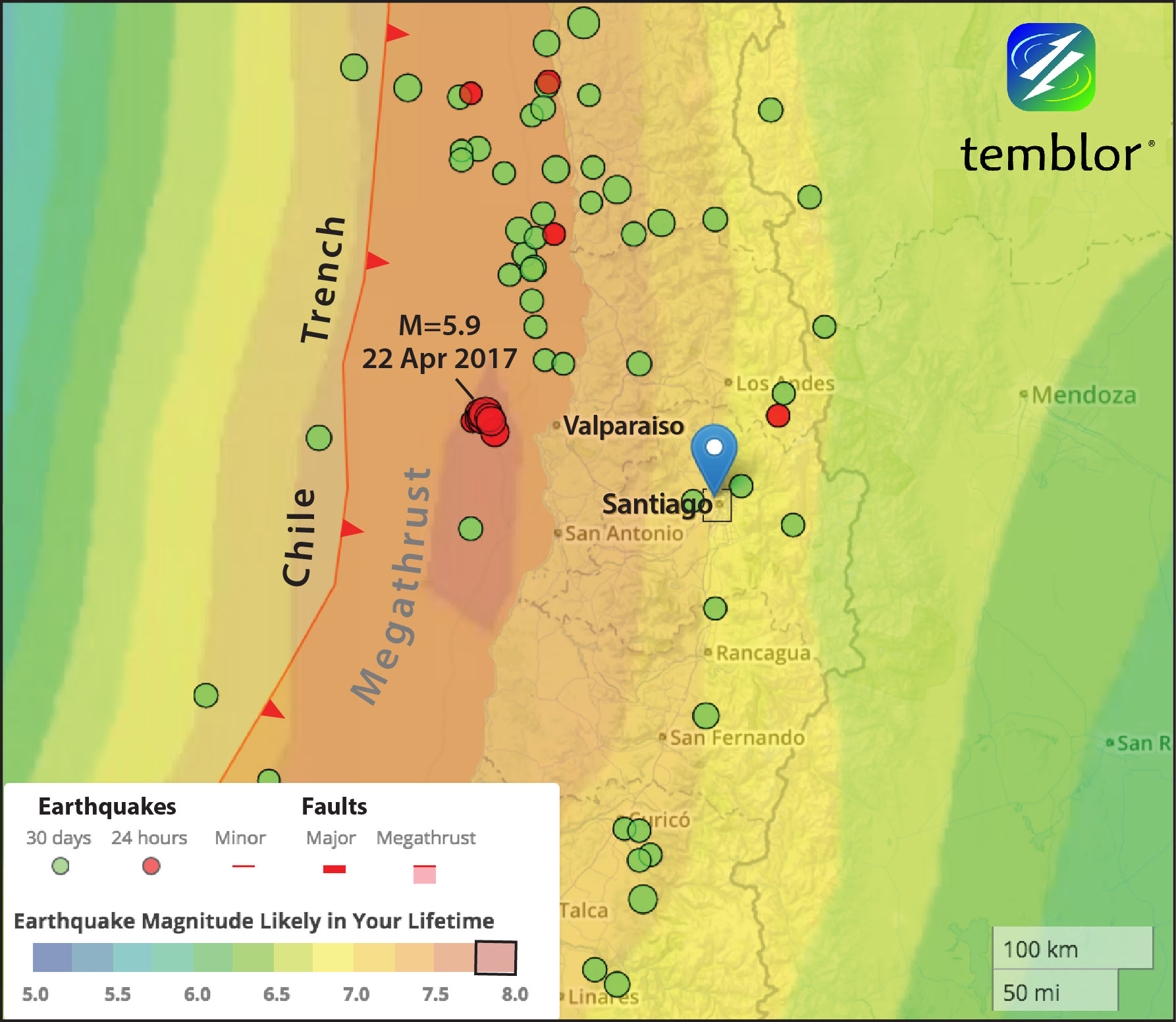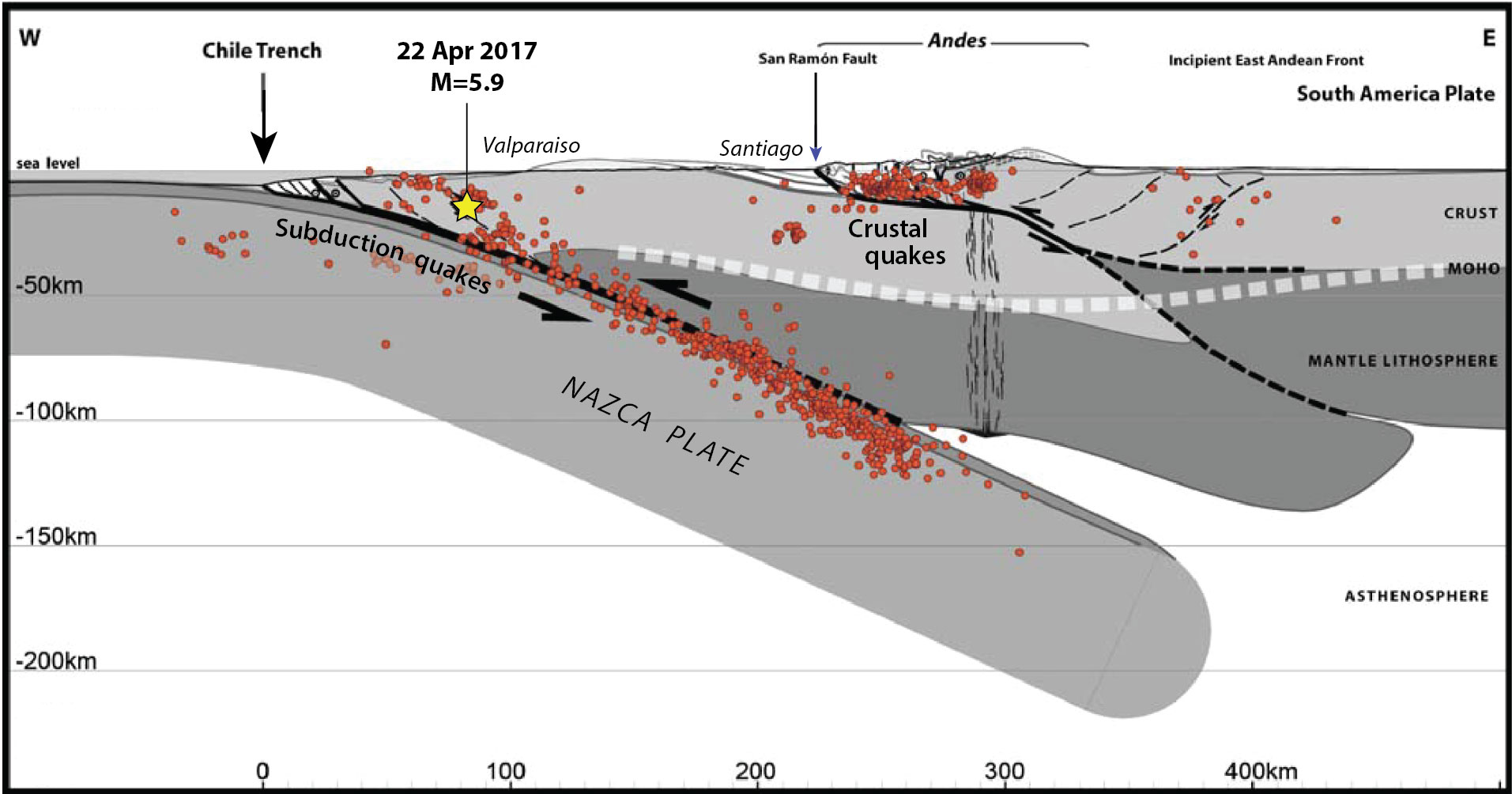By Ross Stein and Volkan Sevilgen, Temblor
** Read about the M=6.9 earthquake that followed this swarm **
First Reported: 22 April 2017
Updated: 24 April 2017
Español

Eight M~5 earthquakes have occurred on or near the megathrust surface, 30 km (18 mi) offshore of the major port city of Valparaiso, Chile. Santiago, Chile’s capital, lies another 100 km (60 mi) inland, where the largest quake was widely felt.
About 4 hours into the sequence, a M=6.0 earthquake struck, which was followed by five more M~5 shocks, as registered by the EMSC of Paris. Sustained sequences of moderate shocks are rare; most instead begin with the largest shock, termed the ‘mainshock,’ followed by ‘aftershocks’ that become less frequent with time, and are only rarely larger than the mainshock. So, in both respects—magnitude and frequency—this sequence looks different. Staccato seismic swarms like this one probably accompany slow slip on either the megathrust, or a thrust fault that splays off the megathrust.

Here’s what Gavin Hayes from the USGS said to us about the sequence: “The W-phase mechanism for the main shock looks related to the megathrust to me. These events aren’t far beyond the south end of the 2015 M=8.3 Illapel earthquake, and there’s a gap between 2010 M=8.8 Maule and the 2015 rupture zones. The Maule and Illapel earthquakes didn’t have appreciable foreshock sequences, but the 2014 Iquique event in northern Chile did. All food for thought.”


The depth and location of the sequence, as well as the ‘focal mechanism’ of the largest shock, suggest that the sequence is occurring on, or more likely above, the megathrust surface, where the Nazca Plate is descending beneath the South American Plate. The world’s great quakes have all struck on megathrusts, and the largest quake ever recorded—a M=9.5 event in 1960—struck along the Chile Trench in 1960 about 800 km (500 mi) to the south of today’s events. Closer to home was the 2010 M=8.8 Maule, Chile, earthquake, which we calculate brought the Valparaiso portion of the megathrust closer to failure.

That earthquakes should occur in this location is consistent with the Coulomb stress transfer from the 2010 M=8.8 Maule shock. One can see on the image below that the megathrust surface offshore Valparaiso was brought closer to failure (turns orange), whereas the stress dropped on the part of the megathrust that slipped in the 2010 shock (turns blue).

References
Armijo, R., R. Rauld, R. Thiele, G. Vargas, J. Campos, R. Lacassin, and E. Kausel (2010). The west Andean thrust (WAT), the san Ramón fault and the seismic hazard for Santiago (Chile), Tectonics, 29, TC2007.
Hayes, G. P., D. J. Wald, and R. L. Johnson (2012), Slab1.0: A three-dimensional model of global subduction zone geometries, J. Geophys. Res., 117, B01302, doi:10.1029/2011JB008524.
USGS
EMSC
- Earthquake science illuminates landslide behavior - June 13, 2025
- Destruction and Transformation: Lessons learned from the 2015 Gorkha, Nepal, earthquake - April 25, 2025
- Knock, knock, knocking on your door – the Julian earthquake in southern California issues reminder to be prepared - April 24, 2025
